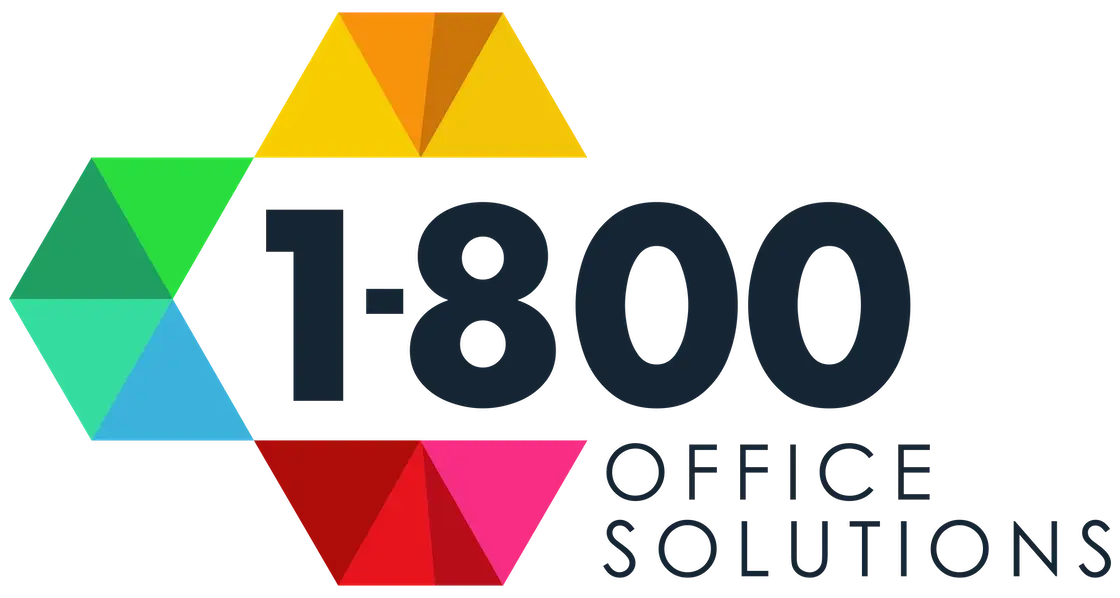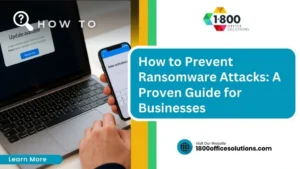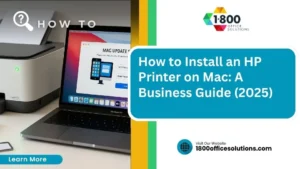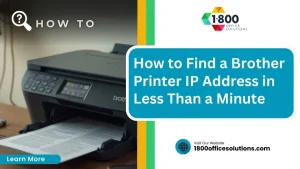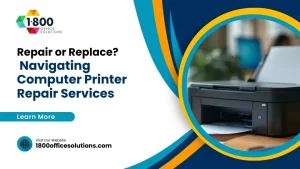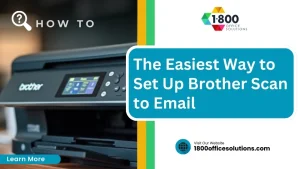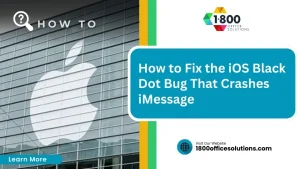How to Choose the Best Office Equipment Solutions for Your Business in 2025
AI Overview:
This guide shows how modern, cloud-connected and AI-powered office equipment helps businesses cut costs, improve security, and streamline workflows. It explains how to choose the right copiers and printers, when leasing is better than buying, and how managed print, IT, and cybersecurity services reduce risk, boost uptime, and control total cost of ownership. It also provides practical tips for secure setup, maintenance, and long-term equipment planning.
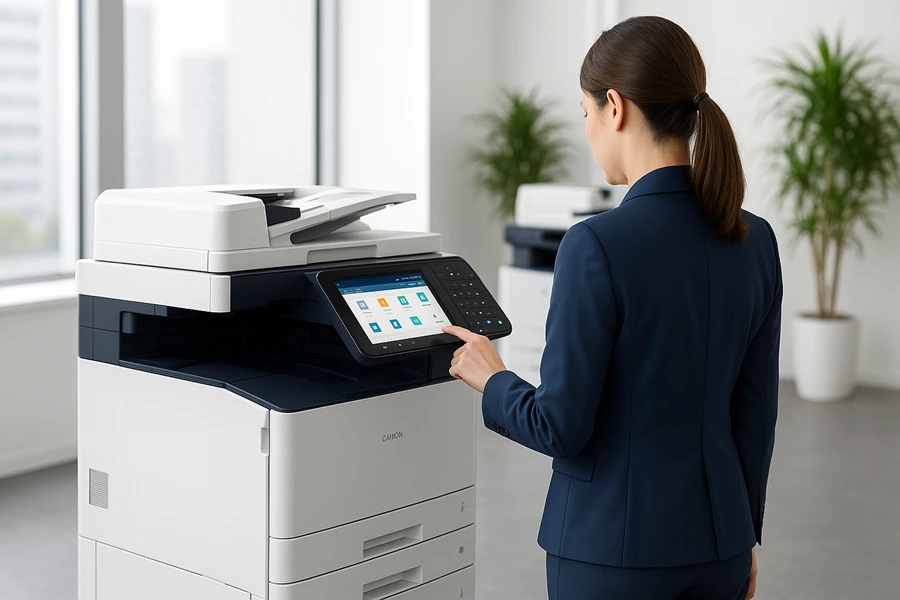
Office Equipment Solutions: How to Choose, Lease, and Optimize for Business Success
Today’s office equipment is more than machines — it’s a mix of hardware, software, and managed services that together address three common business problems: rising capital costs, security gaps from networked devices, and slow, paper-based workflows. This guide walks you through evaluating commercial copiers and printers, deciding when leasing is smarter than buying, and how managed IT and cybersecurity services work with your print fleet to protect data. You’ll get practical selection criteria, a simple comparison of lease terms, maintenance tips, and how managed print and IT services lower total cost of ownership while keeping uptime high. After a look at market trends and device features, we cover leasing options, map cybersecurity controls for printers and copiers, and offer checklists for procurement and lifecycle management. If you’d like bundled equipment and service pricing, 1-800 Office Solutions can coordinate leasing, repairs, and managed IT/security to match your lease and operational needs. The recommendations below follow industry best practices and decision frameworks, and point out where combined equipment + managed services make deployment easier.
What Are the Latest Office Technology Advancements Transforming Business Equipment?
By 2025 office devices are shifting from standalone hardware to cloud-enabled, AI-powered workflow hubs that remove friction across document lifecycles. That change happens by moving processing and analytics to the cloud or embedding smarter firmware on the device. The result: predictive maintenance, secure cloud scanning, and consumption-based billing that ties cost to actual use. Businesses see higher uptime, smoother document workflows, and fewer manual steps between scanning, storing, and finding files. Knowing these trends helps procurement teams judge models on operational impact, not just specs.
- Cloud-connected devices: scan-to-cloud, centralized settings, and remote firmware updates cut local admin work.
- AI-driven features: predictive maintenance and automated routing reduce downtime and speed processing.
- Sustainable design and subscriptions: fewer wasted consumables and more frequent, managed refresh cycles.
- Equipment-as-a-service and usage pricing: spending that better matches actual printing and copying patterns.
Together, these trends support hybrid work and remote document workflows and set the stage for how AI and cloud services expand device capabilities.
How Are AI and Cloud Integration Enhancing Modern Office Equipment?
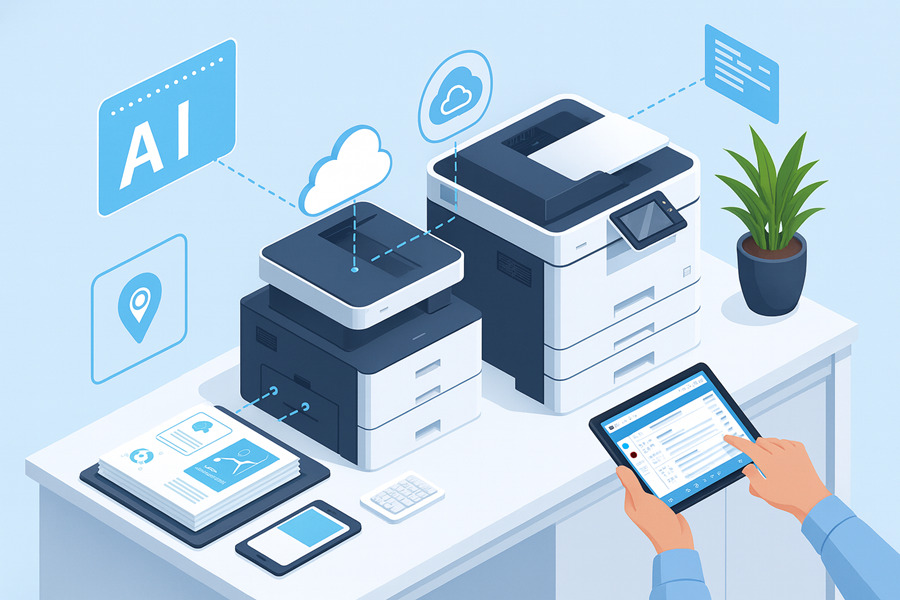
AI and cloud services turn copiers and printers into active workflow partners that can analyze documents, predict failures, and route jobs automatically. Devices use on-board analytics or send telemetry to a secure cloud console where machine-learning models detect patterns — for example, triggering a toner reorder when usage indicates depletion, spotting anomalies in print jobs that suggest misconfiguration, or adjusting energy use based on schedules. The payoff is fewer support calls, fewer emergency service visits, steadier print quality, and lower operating costs.
These integrations also streamline document handling: OCR plus cloud indexing speeds retrieval and makes it easier to plug printers into document management systems.
What Eco-Friendly Office Technology Options Are Available in 2025?
Sustainability now touches energy use, materials, and consumable lifecycle. Energy Star and EPEAT remain solid efficiency signals; toner-saving modes and default duplex printing cut paper and supply costs. Manufacturers are using more recycled plastics and designing for refurbishment, which extends fleet life and reduces landfill waste. Subscription and as-a-service models further lower waste by centralizing upgrades and recycling through the provider.
Choosing greener equipment often lowers ongoing costs through reduced energy and consumable use — and sustainability preferences increasingly influence vendor selection and lease negotiations.
Why Should Businesses Consider Commercial Copier Leasing Over Buying?
Leasing moves a large upfront purchase into predictable monthly operating costs and can bundle maintenance, supplies, and support into one contract that’s easier to budget. Lease payments typically cover hardware depreciation, service SLAs, and consumables management — all of which cut the administrative overhead of juggling multiple vendors. Many organizations also prefer leasing because it gives a regular path to newer technology, lowering obsolescence risk and improving security through managed updates. When comparing lease options, match term length, included services, and response times to your monthly print volume and uptime needs.
When weighing leasing against buying, keep these common benefits and trade-offs in mind:
- Lower upfront cost: Leasing reduces capital outlay and smooths monthly budgets.
- Maintenance and supplies included: All-in-one packages consolidate toner, parts, and on-site service.
- Technology refresh: Lease terms often include upgrade paths to avoid obsolescence.
- Accounting and tax factors: Leases can offer different expense treatment than purchases.
Office Printer Security Vulnerabilities: A Gateway to Enterprise Network Breaches
Even with better defenses, attackers are finding new ways into networks — and printers are a common target. Modern printers and MFPs behave like small computers and, if exposed, can provide attackers with access to internal systems. This paper reviews past printer attacks, outlines a practical method for assessing device security, and reports on surveys of IT professionals about social-engineering risks and protocol exposure. The result is a consolidated checklist for organizations to harden printers, copiers, and 3D printers against common vulnerabilities and attacks.
Vulnerabilities in Office Printers, Multifunction Printers (MFP), 3D Printers, and Digital Copiers: A Gateway to Breach Our Enterprise Network, EB Blancaflor, 2023
Those leasing advantages lead into how flexible lease terms and all-inclusive packages work, and what to ask for in contract language.
What Are the Key Benefits of Leasing Commercial Copiers and Printers?
Leases combine predictable monthly payments with service, which reduces procurement friction and makes total cost of ownership easier to forecast. Leasing can eliminate large capital outlays, include supplies and on-site repairs, and schedule technology refreshes so your fleet stays current with security and workflow features. For teams with fluctuating demand, shorter leases or usage billing can match costs to seasonal peaks. For example, a marketing team that needs lots of large-format prints during campaigns may prefer a lease that covers toner and fast-response SLAs to avoid delays.
Compare these benefits to buying by looking at expected volume, security needs, and how comfortable you are managing spare parts and repairs internally.
How Do Flexible Leasing Terms and All-Inclusive Packages Work?
Flexible leases typically come in month-to-month, 12-, 36-, or 60-month options. Shorter terms cost more per month but give agility; longer terms lower monthly payments but extend commitment. All-inclusive packages usually cover toner, scheduled preventive maintenance, parts, and standard repairs, with SLAs spelling out response times and escalation steps. For example, an all-inclusive agreement might include toner and a 24–48 hour on-site response for covered issues, taking the load off your IT team and leaving fleet health to the vendor.
For tailored quotes and AI-assisted lease modeling, request a custom estimate from a provider that combines equipment leasing with managed services — it simplifies procurement and aligns service levels with business priorities.
How Can Managed Cybersecurity Solutions Protect Your Office Equipment and Data?
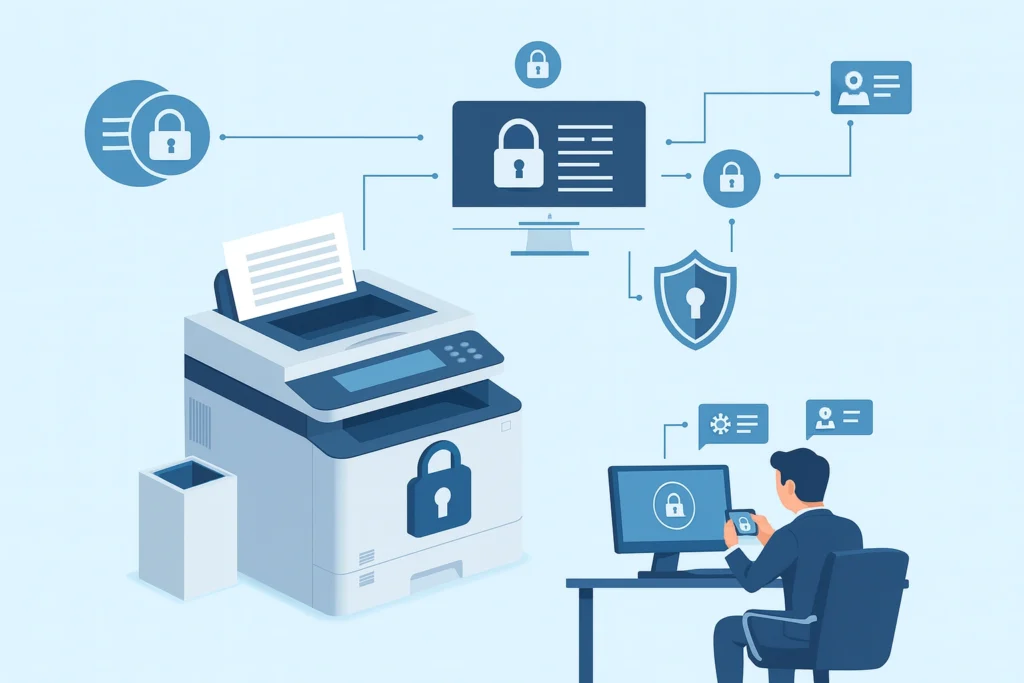
Managed cybersecurity reduces risk from networked printers and copiers by combining continuous monitoring, endpoint protection, and policy-driven controls. These services put detection and response capabilities on devices and their networks, enforce encryption, and centralize logs for faster investigation. The tangible results are less data exposure from cached drives, fewer lateral-movement incidents starting at printers, and quicker containment of suspicious activity. Mapping security services to device vulnerabilities helps teams pick the controls that deliver real protection.
Key managed cybersecurity features that protect office equipment and corporate data include:
- 24/7 SOC monitoring: around-the-clock log analysis to spot anomalies tied to print fleets.
- Endpoint Detection and Response (EDR): finds and isolates compromised endpoints, including embedded systems.
- Patch and firmware management: keeps device software up to date to close known vulnerabilities.
- Incident response and vCISO advisory: playbooks and executive guidance for containment and compliance.
These managed services dovetail with device configuration best practices, which we cover next for copiers and printers.
What Are the Essential Features of Managed Cybersecurity Services for Businesses?
Essential managed security capabilities include 24/7 monitoring, automated incident response, endpoint protection, and regular vulnerability scanning — together they create a layered defense for office devices. Continuous monitoring with clear escalation paths reduces dwell time for threats that touch printers, while EDR extends visibility to compromised endpoints and can quarantine suspect traffic. Vulnerability scanning finds outdated firmware and open services attackers might exploit, and a virtual CISO (vCISO) helps align policies and compliance. Together, these elements lower operational risk and improve incident readiness.
Putting these pieces in place ensures copiers and printers aren’t the weak link in your security posture.
How Does Secure Office Equipment Integration Enhance Data Protection?
Secure integration combines device hardening, network segmentation, and strict access controls to limit exposure of stored and in-transit data. Best practices include enabling encrypted storage, enforcing user authentication, isolating printers on their own VLANs, and disabling unneeded services. A practical checklist: block anonymous FTP/HTTP, enable disk encryption and secure erase, and require authenticated APIs for scan-to-cloud. These steps significantly reduce data leakage risk and make device behavior align with enterprise security policies.
| Security Service Component | What it Protects | Benefit / Outcome |
|---|---|---|
| 24/7 SOC Monitoring | Network events from printers/copiers | Faster detection and containment |
| EDR / Endpoint Protection | Device-level compromise and malware | Isolation and remediation of infected devices |
| Patch & Firmware Management | Known vulnerabilities in device firmware | Reduced exploitability and attack surface |
| vCISO / Policy Advisory | Compliance and incident playbooks | Better governance and audit readiness |
This mapping shows how each managed security component directly addresses risks tied to networked office equipment, helping IT leaders prioritize controls and spend.
If you want an integrated approach, 1-800 Office Solutions offers managed cybersecurity alongside copier leasing and managed IT, and can arrange a consultation or quote to align procurement with security requirements.
What Business IT Support Services Complement Your Office Equipment Needs?
Managed IT services — plus network management, helpdesk support, and backups — form the operational backbone for reliable office equipment and document workflows. These services monitor device health, manage configurations, and resolve incidents quickly so printing and scanning remain dependable parts of daily work. When an IT provider also manages print services, invoices, supplies, and incident handling are centralized, freeing internal teams to focus on higher-value projects. Knowing which IT services to pair with printing equipment streamlines onboarding and ongoing operations.
Common IT support services that align with office equipment needs include the following:
- Managed IT services: proactive monitoring and patching to keep devices online.
- Network management: bandwidth planning, QoS, and segmentation for print traffic.
- Helpdesk and on-site support: fast fault resolution and user training.
- Backup and disaster recovery: preserving scanned documents and templates.
These services lower mean time to repair and improve device uptime, which we cover next when describing specific operational improvements.
How Do Managed IT Services Improve Office Technology Efficiency?
Managed IT increases efficiency through proactive monitoring, scheduled maintenance, and quick remediation that cut unplanned downtime for printers and copiers. Monitoring platforms watch telemetry — toner levels, paper jams, error codes — and can auto-create tickets when thresholds are hit, speeding repairs. Regular patch and firmware management closes security gaps and keeps features consistent across fleets. Helpdesk integration centralizes support so one provider coordinates repairs and user assistance. Track KPIs like uptime percentage, mean time to repair, and cost per page to monitor operational health.
These improvements make workflows more predictable and reduce total cost of ownership across departments.
What Role Do VoIP Phone Systems and Network Management Play in Office Solutions?
VoIP systems and network management affect device choice and placement because bandwidth, Quality of Service (QoS), and segmentation matter for stable print and voice traffic. Network designers must account for peak print jobs and concurrent VoIP streams to avoid packet loss or print delays. QoS policies prioritize time-sensitive traffic, and high-volume or large-format printers should sit on separate VLANs with controlled access so they don’t interfere with core systems. Planning capacity and following best-practice configurations ensures voice and print systems run reliably.
These network considerations should be coordinated with IT during procurement to ensure an optimal deployment.
How Do You Choose the Right Commercial Copier or Printer for Your Business?
Picking the right copier or printer means matching device capabilities to volume, security requirements, and document workflows while keeping total cost of ownership and service models in mind. Start by grouping needs — desktop MFPs for general office tasks, large-format for creative teams, and high-speed floor models for mailrooms — then score candidates on speed, duty cycle, security features, and cloud support. Don’t forget brand support and service networks: reliable maintenance lowers operational risk. A decision workflow that quantifies pages per month, finishing needs, and security requirements makes vendor comparisons straightforward.
Key features to evaluate during selection include the following checklist:
- Duty cycle and pages-per-minute that match departmental volume.
- Color vs. black-and-white needs based on marketing and compliance requirements.
- Cloud integration for scan-to-cloud workflows and centralized management.
- Security features such as encrypted storage, secure erase, and user authentication.
Use these criteria to drive device comparisons and finalize procurement choices.
What Features Should You Look for in Multifunction and Large Format Printers?
For MFPs and large-format printers focus on specs and workflow features that fit how your teams work. Important hardware items include recommended monthly duty cycle, pages per minute, maximum paper size, finishing options (stapling, folding, booklet), and scanner throughput. Verify security features like hard-drive encryption, secure boot, and admin controls, and check cloud features for authenticated scan-to-cloud and API compatibility with document systems. For many SMBs, 25–50 ppm with a duty cycle about 1.5× expected monthly volume is a sensible target to avoid overloading devices.
Matching these features to departmental needs prevents under-spec’ing equipment and helps control ongoing costs.
How Do Brand Comparisons Influence Copier and Printer Selection?
Compare brands using neutral criteria: reliability (uptime history), service responsiveness, feature fit for your workflows, and total cost of ownership including consumables. Some vendors focus on hardware innovation, others on national service coverage or bundled managed print services — weigh those strengths against your priorities. For procurement, build a scoring matrix to rate each vendor across these areas instead of relying on reputation alone. That approach clarifies trade-offs between upfront price and long-term support when multiple models meet your requirements.
| Device Class / Model Type | Speed (ppm) | Color/BW | Max Paper Size | Cloud & Security Features |
|---|---|---|---|---|
| Desktop MFP | 20–35 | Color/BW options | Letter/Legal | Basic cloud scan, user authentication |
| Floor Model MFP | 35–75 | Color/BW | Up to tabloid | Advanced cloud integration, HDD encryption |
| Large Format Printer | N/A (folio size) | Color | Up to 24–44 inches | Workflow APIs, secure user access |
This table helps you compare device classes and the features that matter most for workflows and security during selection.
What Are the Best Practices for Maintaining and Repairing Office Equipment?
Good maintenance combines scheduled preventive care, managed print services, and clear escalation SLAs to keep fleets reliable and cost-effective. Preventive maintenance reduces unexpected failures by replacing wear items and applying firmware updates, while managed print services centralize supplies and usage data for targeted optimizations. Decide repair timing using SLAs, cost-per-page thresholds, and end-of-life signs like rising failure rates or unrepairable parts. Contracts that define response times and coverage reduce ambiguity and help plan replacements.
A routine maintenance checklist puts these practices into action:
- Schedule preventive maintenance based on duty cycle and manufacturer guidance.
- Monitor consumables and automate replenishment to avoid mid-job interruptions.
- Apply firmware and security updates during maintenance windows to limit disruption.
- Use usage analytics and cost-per-page to decide when replacement is cheaper than repeated repairs.
Following these steps lowers downtime and improves lifecycle economics — which is exactly what managed print services enable.
How Do Managed Print Services Reduce Costs and Improve Workflow?
Managed Print Services (MPS) cut costs by consolidating supplies, automating replenishment, and delivering usage analytics that reveal high-cost devices or inefficient habits. MPS teams inventory your fleet, trigger toner shipments from telemetry, and produce reports on cost-per-page and consumption patterns that support policies like duplex defaults or print quotas. MPS shifts administrative work to the provider and often delivers measurable savings through consolidated billing and fewer emergency repairs. Track reductions in print spend, uptime improvements, and faster incident resolution as core outcomes.
Those measurable gains make MPS an appealing choice for organizations that want tighter control over print costs and visibility into usage.
When Should You Schedule Copier and Printer Repair Services?
Call for repair when errors persist after basic troubleshooting, uptime falls below agreed levels, or repair costs approach the point where replacement is more economical; SLA-driven repairs reduce operational risk. Watch for recurring hardware faults, worsening print quality despite maintenance, or error codes that signal impending failures. Service contracts should spell out response times, escalation paths, and whether repairs are covered by warranty or a plan, since coverage affects the repair vs. replace decision. A common replacement trigger is when annual repair costs reach roughly 50% of replacement value.
When one provider handles leasing and support, repair versus replacement decisions are simpler because procurement and service are coordinated under a single agreement.
If you’re ready to align procurement, managed print, and cybersecurity, 1-800 Office Solutions can prepare quotes for copier leasing, managed print services, and managed cybersecurity consultations to simplify vendor coordination and budgeting.
Frequently Asked Questions
What are the advantages of using managed print services (MPS) for office equipment?
Managed Print Services streamline supplies, automate toner replacement, and provide usage data that uncovers waste and cost drivers. MPS reduces administrative overhead, delivers proactive maintenance, and often lowers total print spend through consolidated billing and fewer emergency repairs. In short, MPS frees your team to focus on core work while making printing costs and behavior more transparent and manageable.
How can businesses ensure the security of their office equipment?
Secure your office equipment with a layered approach: harden device settings, segment printer traffic on its own VLAN, require user authentication, and enable encrypted storage and secure erase. Keep firmware patched, perform regular security audits, and train staff on safe printing practices. These steps, combined with managed monitoring, greatly reduce the chance that a printer becomes an entry point to your network.
What factors should be considered when choosing between leasing and buying office equipment?
Compare upfront cost, expected lifetime, upgrade needs, and operational complexity. Leasing lowers initial expense and makes upgrades easier, while buying can be cheaper over a long, stable lifecycle. Consider total cost of ownership, service needs, and how quickly your technology must evolve before deciding.
How do cloud-connected devices improve office workflows?
Cloud-connected devices enable scan-to-cloud, centralized configuration, and remote updates — all of which reduce admin work and speed document workflows. They let teams access and share scanned documents from anywhere and integrate printers with document-management tools, improving collaboration and cutting manual steps.
What role does IT support play in maintaining office equipment?
IT support keeps devices updated, configured, and integrated into the network. Managed IT offers proactive monitoring, troubleshooting, and quick incident response, which minimizes downtime and improves performance. When IT manages print services too, support, billing, and supplies are centralized for simpler operations.
What are the best practices for maintaining office printers and copiers?
Follow a preventive schedule based on duty cycle, monitor consumables and automate replenishment, and apply firmware updates during maintenance windows. Track usage analytics to decide when replacement beats repeated repairs, and use clear SLAs to ensure timely service and predictable uptime.



